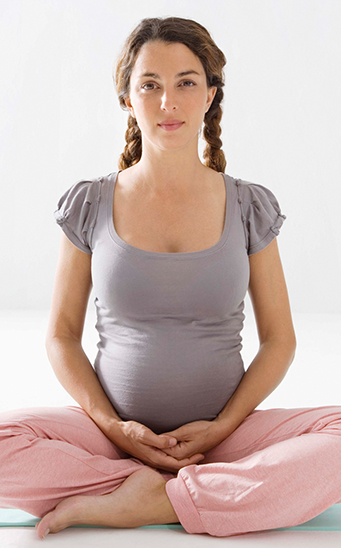
Changes in your baby from 30 to 35 weeks
How heavy is the belly! At this time your baby is 45 cm and can weigh 2 kilos. You have to start thinking about the bureaucratic paperwork to have everything arranged at the time of delivery.
Week 31
It is at this stage when it will be necessary to fix bureaucratic problems (such as maternity leave). Your belly is big, heavy, but it still allows you to move with some ease. Take advantage of this time to leave all these issues well closed.
If you have had problems of threatened premature labor or preterm labor, it is better that from this moment you avoid having sexual intercourse and try to increase your rest. At the end of this week your child is about 18 inches tall and weighs between 1700-2200 grams .
Week 32
You should start preparing your breasts for breastfeeding. There are different preparations on the market that your doctor will provide you. One of the measures that can be most useful to strengthen your areola is to expose your breasts to solar radiation (an easy, inexpensive and very effective method).
During this stage, most babies adopt their final position for delivery. Most of the time it is placed in a longitudinal position , that is, when the spine of the fetus and the mother are parallel, having the buttocks in the upper part of the uterus, and the head in the lower part. This is called the cephalic presentation . The baby’s back is usually on the left side. It is a good time for you to feel your belly and try to discover some parts of its body. The feet will be easy to recognize due to their sudden movement.
On other less frequent occasions, your baby may position himself in other ways. You can also have it in a longitudinal position, but with the head in the upper part and the buttocks in the lower part. It is the so-called breech or breech situation . There are obstetricians who do not venture to perform a vaginal breech delivery if it is your first delivery and prefer to perform an elective or scheduled cesarean section. Keep in mind that the fetus, as the gestation progresses, will be more difficult for its situation to change, but in second or third births the probability of it turning is greater.
Even less frequent are transverse and oblique situations, in which the baby’s spine and the maternal spine do not coincide, but instead form an angle , with the head on one side of the uterus and the buttocks on the other. If your baby does not change position, a cesarean section will be your only option to deliver.
Week 33
It is possible that varicose veins begin to appear, your ankles begin to swell, especially in summer, and back pain increases. It is important that you go for a walk every day , although the pressure of the child on the ribs is likely to bother you a bit. Exercise in moderation ; do not arrive exhausted.
Week 34
Ask your doctor for information about the type of delivery that will occur. You may start to notice some contractions and weight in your lower abdomen. These contractions are usually irregular and not painful, and warn us that we are in the final stretch of your pregnancy. They are also called Braxton-Hicks contractions .
If possible, stop working or at least try to decrease your work activity to increase your hours of rest.
Week 35
Between 34 and 35 weeks, your doctor should order another ultrasound. With this ultrasound, the doctor estimates the normality of the fetus and that of its environment. Thanks to this ultrasound we will perform an assessment of fetal growth; we will review the correct fetal anatomy; the amount of amniotic fluid; location and characteristics of the placenta and umbilical cord, as well as an evaluation of fetal statics.
At this time, the fundus reaches the lower end of the sternum. Thanks to the placement of your hands on your abdomen and with a little imagination you may be able to guess how your baby is positioned inside the womb, it is what are called the Leopold maneuvers , very useful due to the information that they provide to the doctor.






















+ There are no comments
Add yours